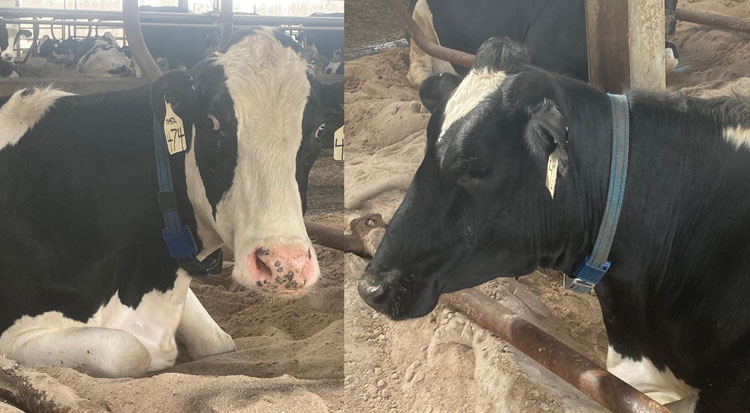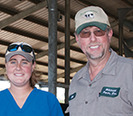
About 13 years ago we moved our cows from pasture to freestall housing. On the pasture system, we were calving seasonally for the most part because of the outside weather elements we were dealing with. When we moved the cows into the barn, we eliminated a lot of those challenges.
It was like moving the cows into a Hilton Hotel. They had cool, clean sand beds, a sprinkler cooling system at the feed bunks, a flush system that cleans the barn periodically throughout the day and night, and rubber flooring throughout.
Eliminating the elements and putting them into the barn gave us such a boost in heat detection. Now we can watch for heats all day, every day. That’s because after putting the cows into the barn, we bought activity tags. They are put onto a collar, and a collar is placed on the neck of each cow. This lets us know anytime a cow is in heat, what time they started to come into heat, and where the peak point of their heat is.
Making these additions helped change our seasonal calving completely. We now calve out year-round. This helps keep our days in milk consistent throughout the year and helps maintain steady milk production year-round.
Although we are highly pleased with the activity collars, we do not rely on them solely. We are in the freestall barn periodically doing fetches, pushing feed, and so forth, so we keep our eyes open as well.
The activity collars do have a lifespan, so occasionally we need to change out some tags with new ones. The DeLaval DelPro system we use lets you know when they go bad. It’s a simple process to figure out which ones are not working.
Between using the tags and watching the cows for heats, it seems like that is all we need. We haven’t done anything extra to bring cows into ovulation except for cows that are over 60 days in milk and haven’t had a heat yet. At vet check, we look for static or cystic ovaries in those cows and then administer the correct treatment, whether it would be GnRH or Lutalyse, to help them cycle if needed. That is the extent to our process.
Overall, I am pleased with the heat detection steps we do here at the farm. It is simple, easy, and effective!

Mark and Caitlin Rodgers are dairy farmers in Dearing, Georgia. The Rodgers have a 400-cow dairy that averages 32,000 pounds of milk. Follow their family farm on Facebook at Hillcrest Farms Inc.








